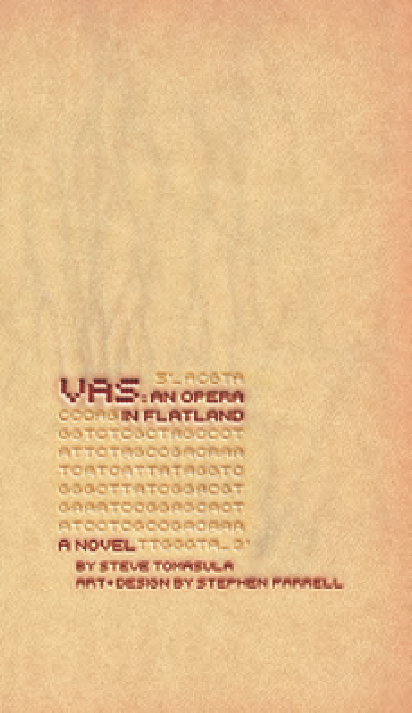Graphics Reference
In-Depth Information
CASE STUDY
Book design:
VAS: An Opera in Flatland
Coauthored by Steve Tomasula and Stephen Farrell, and designed
by Stephen Farrell,
VAS: An Opera in
Flatland
, provides an
uncommon, multimodal reading experience. A plethora of texts and
images combine to reveal dynamic layers of subtexts and expanded
narratives. “Authoring”
VAS
evolved more as a process of structuring
and organizing masses of ideas and information than of weaving a
linear tale.
Combining the processes of writing and design, the authors
worked as a team for a period of six years to juggle research and source
material, bits of writing, raw manuscripts, design concept sketches,
and developing spreads. Based on a leapfrog method of writing,
designing, and researching, the topic was built from the inside out:
the subject matter provided the generative mechanism—the material,
the guidelines, and the constraints—for the topic's organization and
structure. The result fuses subject matter with literary and typographic
structure into an expansive work of 370 pages.
The authors scoured material sources from popular, literary,
and scientific arenas, both classic and contemporary. Raw materials
included evolutionary biology and anthropology books, eugenics
books, government databases, chromosome charts, genetics supply
catalogs, Internet plastic surgery and egg donor sites, medical books,
doll catalogs, and many other sources accumulated over several
years. Some materials were used unaltered as “evidence,” some were
deconstructed and reconstituted, and others were used as structural
frameworks. The authors also generated many of their own images and
illustrations.
The topic's subject matter involves the general theme of human
biology. But more specifically, the text-image novel explores the
myriad ways in which the human body is represented in words and
images, and how these representations shift the way we see, perceive,
and relate to our bodies (Fig.
10-13
).
The topic's protagonist, Square, is a writer married to Circle. He
considers having a vasectomy, but, having doubts about the procedure,
he traverses the realms of science, medicine, bioengineering, and
information technology, pondering the ways in which these domains
reveal aspects of the human body through graphic and literary
portrayal (Fig.
10-14
).
Square focuses on one biological aspect in particular: DNA, the
engine of life on earth. But the phenomenon of DNA is too small and too
complex to depict in its reality. Square observes science, continuously
abstracting it, analogizing it, reframing it, and repackaging it, each
incarnation offering a new representation of DNA.
10-13
On the cover of
VAS
, a system of veins
meandering beneath
flesh introduces readers
to an epic story about the
human body. The topic's
title, bleeding blood red,
emerges from a detail of
DNA data.

